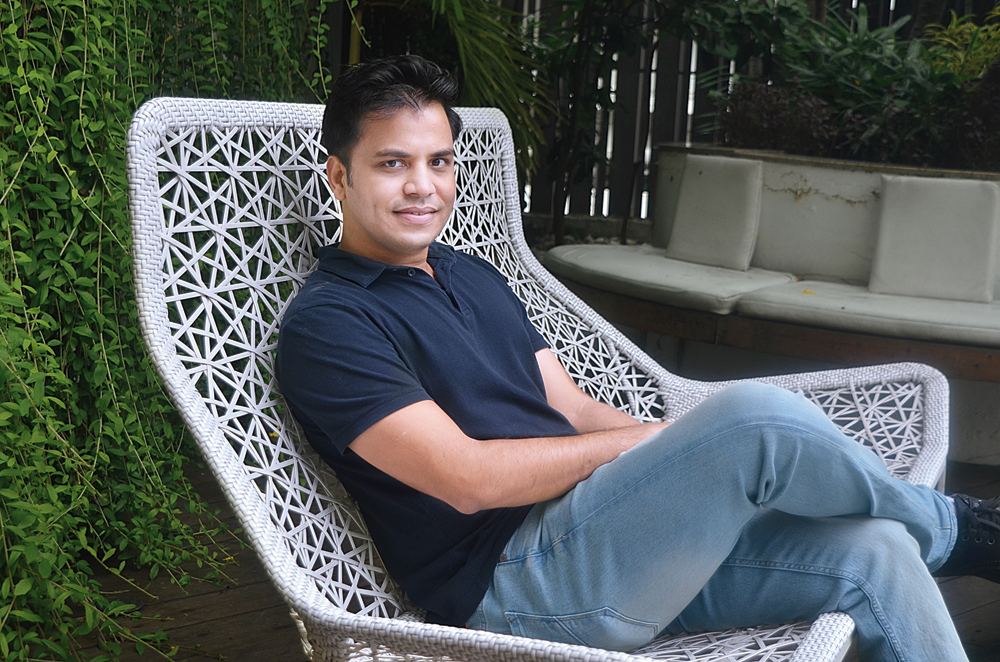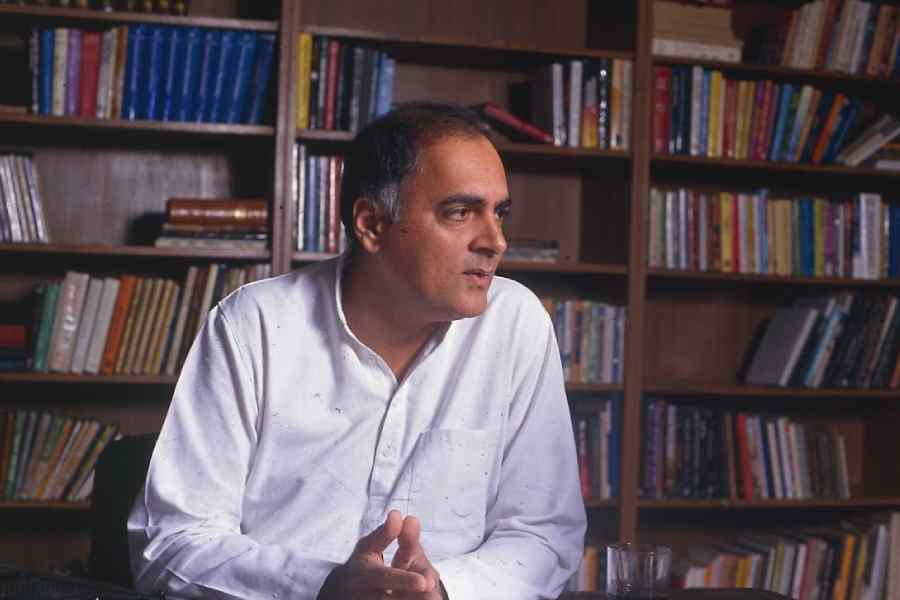Choosing a ceiling fan can be like adding a piece of installation art to a room but, sadly, so far it has mostly been about a motor with three blades with the bigger-is-better concept taking centre stage. One Indian company — still in start-up mode — that is creating noticeable swirls in the ceiling fan space is Atomberg Technologies. The smart and efficient motor-based home appliances company — founded by Manoj Meena and his friend from IIT-Bombay, Sibabrata Das — based in Mumbai, has not only taken the challenge to established brands but is looking to disrupt new areas.
The Telegraph recently caught up with Manoj, who is the CEO and founder, to discuss his company’s bestseller Gorilla fans and more.
Starting with 30-odd projects
The journey started in 2011. I did my BTech and MTech in electrical engineering from IIT Bombay. From college days I had a keen interest in robotics and electronics, which made me participate in a number of competitions. Also, in the final year, I was engaging with a few of my professors on some projects. This made me switch to project mode. I opted out of the placement process and soon after graduation I borrowed money from my friends and family members to start on my projects. I had no idea about business models or even the products to work on. I thought I would come upon “the” idea in a year or two. The exploration phase lasted till 2015, during which I experimented in multiple areas. We did some 30-odd projects for research organisations.
I got an opportunity to learn motor design and electronic control. The team was very small — some four-five people — and this helped us learn. Our team had designed a vehicle tracking system for cold storage monitoring. This was for some very well-known brands. Sadly, we were not able to scale the project. I found it difficult to convince investors that such projects were scalable and I myself was not convinced that things like this could be scalable. It was good to survive and explore one’s passion. There was pressure from family to do something financially viable. At that moment we were incubated at IIT Bombay. Smart homes and smart appliances created a buzz that was building up.
Set the motor running
We didn’t want to get into something that was again a project. It was not about becoming a home-automation integrator. After putting everything on the table, motor turned out to be a critical area. Out of the 30-40 projects, most of them were related to motor design. Many home appliances run on motor, be it ceiling fans or grinder, air coolers or air conditioners. Most motor technology revolves around induction motors and in the last 50-60 years hardly any innovation has been done. Then we studied the impact of motor efficiency of ceiling fans.
We were surprised to see that the actual mechanical output required to circulate the air is only 22W but most fans consume 70-80W. So more than 50W is waste and you are wasting around 70 per cent of electricity in way of heat. We made a few prototypes around something called brushless DC motor technology. This is not something we have invented. Our work is around how to utilise the technology better for home appliances application and make it affordable. We made a few innovations on motor design to make it super efficient and compatible to fit in ceiling fans at an affordable rate. A few patents have been filed on these innovations. The first prototype appeared in 2015. The results were exciting. We got around 28W of power to deliver the same output.

Manoj Meena, CEO and founder of Atomberg Technologies Picture: Biswajit Kundu
Beyond energy efficiency
By the time the product launched, there was an order for 1,500 units. With our seed funding we set up our manufacturing plant in Navi Mumbai. It was time to leave the IIT Bombay incubation centre to a real plant. Our key differentiation lies in energy efficiency, which is only one part. In 2015 the product was not very aesthetically appealing. Ours was more like a B2B business back then… hospitals, colleges, some hotels and cold storage plants.
We listed our product online in 2016 on Flipkart and Amazon. This is when we started interacting with actual customers. People were already aware about energy efficiency, as LED technology had already done its job! There was good traction online. After studying further, we got to know that Indian customers are very aspirational. The feedback changed our products. Our second focus was aesthetics. Since the motor is energy efficient and doesn’t have heating issues, there was a chance to use new materials.
Most traditional fans came in metallic casings. We are using different grades of plastic and if you look at the bottom part of the fan, there is an interface that allows customers to interact. The fans are remote controlled. In April 2019 we came up with IoT-enabled fans, which are compatible with Amazon Alexa and Google Home. There is also the Gorilla app to control the fans.
Number talk
After we started selling online in 2016, we were able to grab 10 per cent market share online. Offline is the larger chunk of the market and that is an area we entered almost 12 months ago. It was a new game for us. So we conducted an experiment in Pune and Mumbai markets. We worked with retailers and shopkeepers and trained them how to sell a fan differently. Whatever counter we were available in, we could manage to grab 10 per cent share. The same mechanism is now being extended to other areas. In Calcutta, we started activities four months ago and we already have 50 counters. Here the institution chunk is big. After selling fans that cost Rs 3,000 and above, we are trying to reach the lower price segment. Thirty-five per cent people are buying our products only for being energy efficient. We have sold around four lakh fans so far but at the current run rate, we hope to cross half a million units this financial year.
Beyond fans
We have identified two product lines, which we will launch and our R&D has started work on it — mixer-grinder and air cooler. Energy efficiency is not a big feature of mixer-grinders because we hardly use them for a few minutes. What we will offer is less noise and vibration. Brushless DC motor technology by nature produces less noise… is virtually noiseless… and there is no vibration. Depending on the region, mixer-grinders are used for different reasons but not all requirements are met. With higher RPM motors, we will be able to play at application mode level. Air cooler is also big. By the end of 2020 we will be in the market with at least our mixer-grinder.
Looking back
No regrets. Back then I was a nerd. I realised, by burning my fingers, that one should ultimately create some value to the society at large. One should be able to solve larger problems. The four lakh fans that are already installed are saving approximately 100GW of electricity and that’s sufficient to power many, many houses. India is an energy-deficient country, so we need energy-efficient products.










